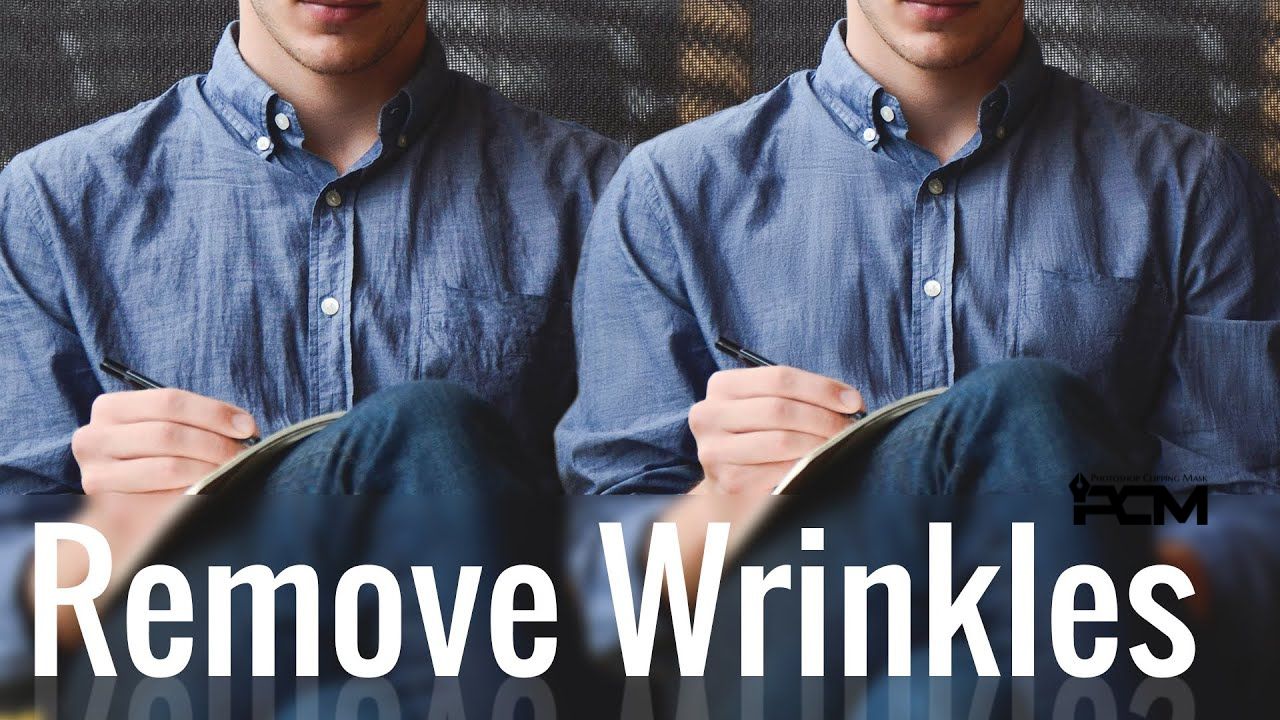Creased clothes in your photos can dampen an otherwise perfect image, especially if you’re capturing shots for professional purposes like eCommerce stores or portfolios. Wrinkles tend to divert attention away from your product or outfit, pulling the focus in the wrong direction. Luckily, Photoshop can help you tackle this problem with precision.
This step-by-step guide will walk you through how to effectively remove wrinkles from clothes using Photoshop tools. Whether you’re an eCommerce store owner, photographer, or graphic designer, you’ll master techniques to ensure your images look polished and professional.
Why Is Removing Wrinkles from Photos Important?
Wrinkles in clothing photos can make outfits look unflattering and unprofessional, which might negatively impact perceptions of your work or brand. For eCommerce businesses, poorly presented products can influence a customer’s buying decision.
By removing wrinkles digitally:
- Clothes appear well-fitted and appealing.
- Images align with your professional brand.
- Your visuals become more engaging to your audience.
Photoshop offers numerous tools to enhance images while making sure the edits look natural. Now, grab your Photoshop workspace, and let’s smooth things out!
How to Remove Wrinkles From Clothes in Photoshop
Step 1: Open the Image in Photoshop
Start by opening the image you want to edit in Photoshop.
- Launch Photoshop and go to File > Open to load your photo.
- Immediately duplicate the original layer to preserve the original image. To do this, right-click on the layer in the Layers panel and choose Duplicate Layer. This gives you a safety net if you want to undo any changes later.
Step 2: Select the Wrinkled Area
Next, zoom in on the wrinkled areas you want to fix. This ensures you’re working precisely.
- Use the Lasso Tool from the toolbar.
- Carefully draw a selection around the wrinkled section of the clothing.
You don’t need to be perfect, but keep the selection area close to the wrinkles for better results.
Step 3: Apply the Healing Brush Tool
The Healing Brush Tool is perfect for removing minor wrinkles in smaller areas. Here’s how to use it effectively:
- Select the Healing Brush Tool from the toolbar.
- Hold down Alt (or Option on Mac) and click a wrinkle-free portion of the clothing to set it as the source point.
- Brush gently over the wrinkles to blend them with the smooth fabric texture.
Pro Tip: Use a soft brush with a low opacity setting for natural-looking results.
Step 4: Use the Patch Tool for Larger Wrinkles
For larger or more pronounced wrinkles, the Patch Tool is a more effective solution.
- Select the Patch Tool from the toolbar.
- Ensure you have “Source” selected in the top options bar.
- Draw around the wrinkled area to create a selection.
- Drag this selection to a smooth, wrinkle-free part of the fabric. The tool will replace the wrinkles with the smoother texture.
Step 5: Refine with the Clone Stamp Tool
The Clone Stamp Tool is great for refining details in areas that still need smoothing after using the Patch Tool.
- Select the Clone Stamp Tool from the toolbar.
- Set a nearby, wrinkle-free area as the source by holding Alt (or Option on Mac) and clicking it.
- Paint gently over any leftover creases to refine inconsistencies.
Adjust the brush size, opacity, and flow settings as needed to match the fabric’s texture seamlessly.
Step 6: Smooth Edits Using Gaussian Blur
After you’ve removed the wrinkles, the edited areas may appear overly sharp or inconsistent with the surrounding fabric. Use Gaussian Blur to soften these areas:
- Press Ctrl + Shift + Alt + E (or Command + Shift + Option + E on Mac) to merge all layers into a new one while keeping your original layers intact.
- Go to Filter > Blur > Gaussian Blur.
- Adjust the radius to lightly smooth the edited areas without blurring the entire image.
Pro Tip: Use a Layer Mask to selectively apply the blur only to edited areas, keeping textures realistic.
Step 7: Adjust with the Liquify Tool
The Liquify Tool helps refine the fabric’s natural drape and shape, ensuring it looks consistent post-edit.
- Go to Filter > Liquify.
- Use the Forward Warp Tool within Liquify to gently nudge the fabric for a more natural look.
- Be careful not to over-adjust to avoid distorting clothing shapes.
Step 8: Final Enhancements
Finally, polish the overall image to make your edits consistent:
- Adjust colors and lighting with Levels, Curves, or Color Balance under Image > Adjustments.
- Check the full photo to ensure the edits blend naturally with the surrounding areas.
- Save your image using File > Save As, keeping the edited version separate from the original.
Tips to Achieve Natural Results
- Work in Small Steps: Avoid over-editing; subtle adjustments are more natural.
- Maintain Fabric Texture: Ensure tools like Clone Stamp and Healing Brush don’t completely erase the texture of the material.
- Save Multiple Versions: Save copies of your file at key steps in case you need to go back.
- Practice on Different Fabrics: Satin, cotton, and wool behave differently in photos. Practice on various textures to adapt your approach.
These tips will help you balance perfection with realism, making your photos stand out without looking overly edited.
Why This Skill Matters For Professionals
For various professionals, the ability to remove wrinkles in Photoshop is a game-changer:
- eCommerce Store Owners can showcase garments in their best form, increasing purchase appeal.
- Photographers can ensure their subjects appear polished without prolonged editing.
- Graphic Designers gain complete control over visual aesthetics, ensuring consistency across campaigns.
Being proficient with Photoshop not only enhances the quality of your work but also saves time and delivers impeccable results.
Smooth Edits, Stunning Results
Removing wrinkles from clothes in photos may seem daunting at first, but with practice and the right tools, you’ll master this essential photo-editing skill in no time. The process not only enhances your photos but also ensures your work aligns with professional standards, providing added value to your clients or business.
Now it’s your turn! Open Photoshop, load a photo, and start practicing the steps outlined above. Every wrinkle you smooth brings you one step closer to perfection.
Want to explore advanced editing techniques? Consider enrolling in our in-depth Photoshop workshops for creatives [add relevant link].

